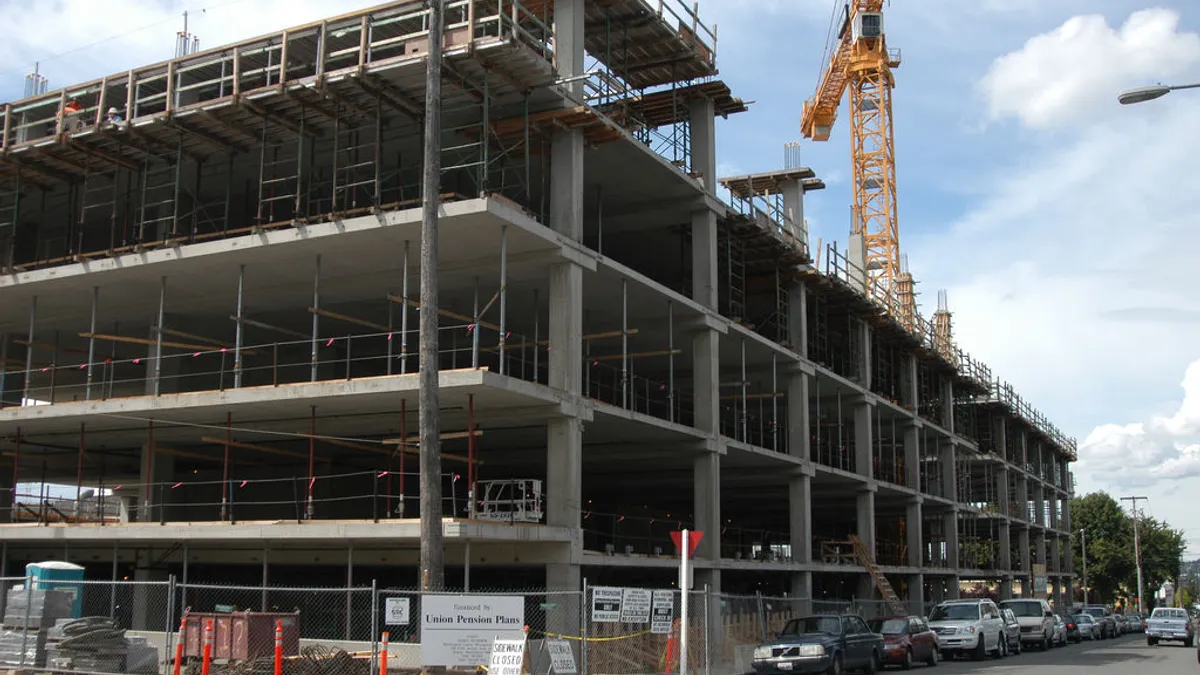Dive Brief:
- According to Wells Fargo Equipment Finance's 2018 Construction Industry Outlook report, optimism for increased construction activity this year on the part of contractors, distributors, manufacturers and equipment rental companies is at a 20-year high.
- The bank's Optimism Quotient is 133, which in addition to being at a two-decade record high, is 10 points higher than last year's measure of enthusiasm for local, nonresidential construction activity. A key takeaway from the 2018 report is that 61% of executives surveyed expect an increase in net profits compared with last year, while 92% expect profits to rise or stay the same. Additionally, contractor equipment rentals already are up from 2017, but survey respondents said that small hikes in rental rates would encourage them purchase equipment rather than rent.
- The report did unveil some concerns about the rising cost of wages, benefits and materials. In addition, 35% of respondents said that political and regulatory uncertainty posed the most risk to the U.S. construction industry, with 32% responded that the Affordable Care Act was their greatest concern.
Dive Insight:
The Wells Fargo report matches up with the Associated General Contractors of America's and Sage Construction and Real Estate's 2018 outlook report released in early January. That report found that 75% of the construction companies surveyed planned to add to their payrolls this year, a sentiment spurred on by lower tax rates and expected regulatory reform.
Other reports have taken a measured approach on the state of the construction economy. For instance, in its most recent construction starts report, Dodge Data & Analytics said December's 2% decrease in total value from November was a sign of the industry's "decelerating expansion, " meaning that it was not so much a decline as much as a slowdown in growth.
Like the authors of the Wells Fargo report, Dodge Chief Economist Robert Murray said the industry could be negatively affected by rising materials prices, and he pointed to a lack of skilled labor as another threat. The budget deficit, he said, could also affect the momentum of the president's proposed $1.5 trillion infrastructure initiative and other public works programs.













